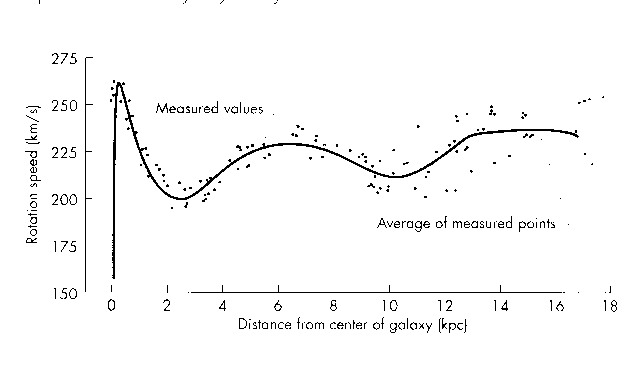
alpha/57.3o = w/R
Multiple Choice Questions (4 points each):
Click on the highlighted letter of the correct answer to get an explanation.
1) High mass stars evolve off the Main Sequence faster than low mass stars because
- a)they have a lower fraction of hydrogen in their cores.
- b) their cores are hotter and fuse hydrogen more quickly.
- c) they fuse helium instead of hydrogen.
- d) trick question: all stars spend the same amount of time on the Main Sequence .
2) You measure the flux from two stars, star #1 in cluster Gak-6, and star #2 in cluster Bip-4. Based on their colors, you conclude that both stars have the same surface temperature. You also notice that star #1 has a higher flux than star #2. Based on this information, what can you conclude?
- a) The two clusters are at the same distance.
- b) Cluster Gak-6 is closer to us than cluster Bip-4.
- c) Cluster Gak-6 is farther from us than cluster Bip-4.
- d) You don't have enough information to determine which cluster is closer.
3) Viewed from Lewisburg, objects on the celestial equator have a Declination of
- a) 0o
- b) 49o
- c) 41o
- d) 90o
4) The surface temperature of a star can be determined from its
- a) absolute magnitude.
- b) apparent magnitude.
- c) bolometric magnitude.
- d) color index.
- e) total luminosity.
5) Once the carbon core of a low mass star is exposed (i.e., after planetary nebula ejection), we call it a "white dwarf." Because they are very hot and very small, white dwarfs (not "dwarves") are located in the lower left of the H-R Diagram. As these objects cool, which way will they move on the H-R Diagram?
- a) They will continue to occupy the same location.
- b) They will move rightward.
- c) They will move rightward and upward.
- d) They will move leftward and upward.
- e) They will move rightward and downward.
6)The relationship between mass and luminosity for Main Sequence stars was determined from
- a) studies of the motions of binary stars.
- b) studies of the colors and fluxes of stars in star clusters.
- c) studies of the periods of variable stars.
- d) studies of the parallaxes and fluxes of nearby stars.
7) Main Sequence stars are supported against gravitational collapse by
- a) thermal pressure from fusion in their cores.
- b) atomic pressure.
- c) electron degeneracy pressure.
- d) neutron degeneracy pressure.
- e) gravitational pressure.
8) White dwarfs are supported against gravitational collapse by
- a) thermal pressure from fusion in their cores.
- b) atomic pressure.
- c) electron degeneracy pressure.
- d) neutron degeneracy pressure.
- e) gravitational pressure.
9) Why is it easier to see all of the stars in the galaxy in infrared light than in optical light?
- a) Dust does not absorb as efficiently in the infrared as it does in the optical.
- b) Stars are more luminous in the infrared than in the optical.
- c) There are more infrared stars than visible stars in the galaxy.
- d) Dark matter does not emit in the infrared.
10) Which of the following is evidence for the presence of dark matter in the outer reaches of our galaxy?
- a) Absorption of light from distant galaxies.
- b) Hydrogen spin-flip emission from the outer reaches of the galaxy.
- c) The high rotation velocity of material in the outer reaches of the galaxy.
- d) The small number of stars seen in the outer reaches of our galaxy.
Short Answer (7 points each)::
Question #1: Explain briefly how you can tell if
one star cluster is older than another
cluster (Hint: A diagram or two might aid your explanation.)
Question #2: Explain how Harlow Shapley was able to determine the direction and distance to the center of our galaxy, and why his correct result was different from the commonly accepted values at the time.
Problems (15 points each):
(Show your work!! I will be very generous with partial credit!!!)
Problem 1) The following information pertains to the bright star Canopus (sadly visible only in the southern hemisphere):
- spectral type: F
- surface temperature: 7400 K
- luminosity: 1171 Lo (= 4.45 x 1029 W)
- mass: 1.7 Mo (= 3.4 x 1030 kg)
- radius: 20.7 Ro (= 1.44 x 1010 m)
- distance: 30.1 pc (= 9.29 x 1017 m)
(15 points)
Problem 2) A 2He4 nucleus has a mass of 6.6488 x 10-27 kg, and a 6C12 nucleus has a mass of 1.99 x 10-26 kg.
Part a) How much energy is generated in the following nuclear reaction (sometimes called the "triple alpha process")?
(8 points)
Part b) How much energy is generated when a solar mass (= 2.0 x 1030 kg) of pure helium is fused into carbon in the center of a massive star?
(8 points)
Problem 3) Below is the "rotation curve" of the Milky Way galaxy, a plot of the speed of objects as a function of their distance from the center of the galaxy. Using the data in this plot, calculate the mass contained within 6 kilo-parsecs (6 kpc, or 6000 pc) of the center of the galaxy.

(15 points)